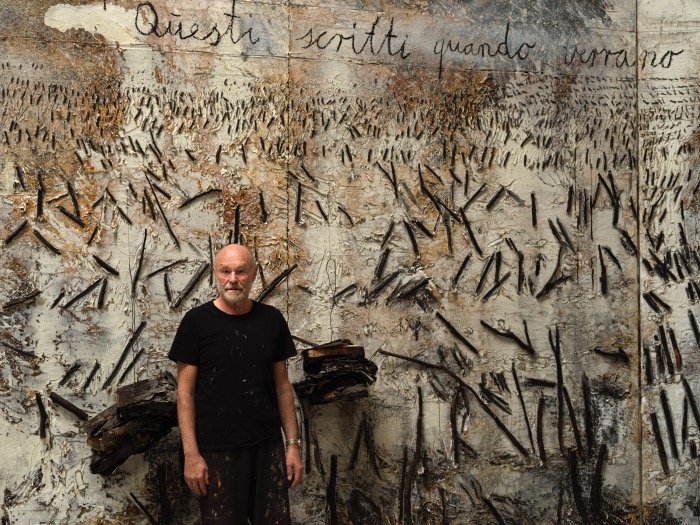
ANSELM KIEFER’S WORKS TO GET TO KNOW
Anselm Kiefer’s huge body of work represents a microcosm of collective memory that contains within it a wide range of cultural, literary and philosophical allusions: from the Old and New Testaments, the mysticism of the Kabbalah, Nordic mythology and Wagner’s Ring cycle, to the poetry of Ingeborg Bachmann and Paul Celan.
Born during the last months of World War II, Kiefer reflects on the identity and history of post-war Germany, grappling with the national mythology of the Third Reich.
Fusing art and literature, painting and sculpture, Anselm Kiefer’s works engage the complex events of history and the primordial sagas of life, death and the cosmos. His repertoire of images is only paralleled by the breadth of techniques in his work.
Works by Anselm Kiefer
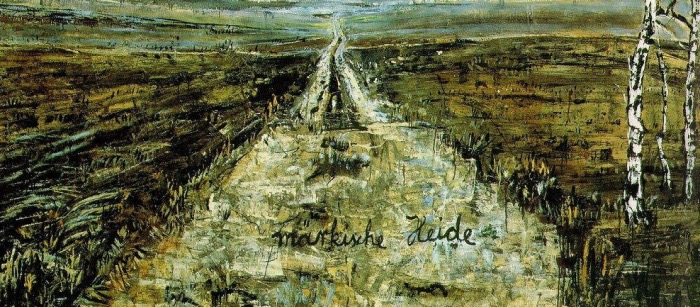
A. Kiefer, Markische heide (1974)
Born in 1945 in Donaueschingen, Germany, Kiefer studied law and Romance languages at the University of Freiburg before devoting himself entirely to art and attending art academies in the same city and in Karlsruhe (1966-69).
Anselm Kiefer’s early works reflect the identity, culture and history of post-World War II Germany. The main references include Wagner’s Ring of the Nibelung, Goethe’s Faust, as well as biblical quotations and Jewish mysticism.
In his works from the 1960s to the 1970s, the artist used symbolic materials such as straw, plants, lead and fabric.
Anselm Kiefer made his mark on the German art scene in 1969 with a highly controversial series of works dedicated to the history of the Second World War, capable of awakening Germany from the collective amnesia of the war. Since
then, Anselm Kiefer’s works have expressed a rejection of the limit, not only in its monumentality and the power of its materiality, but also in the infinite wealth of resources with which he analyses the depths of memory and the past.
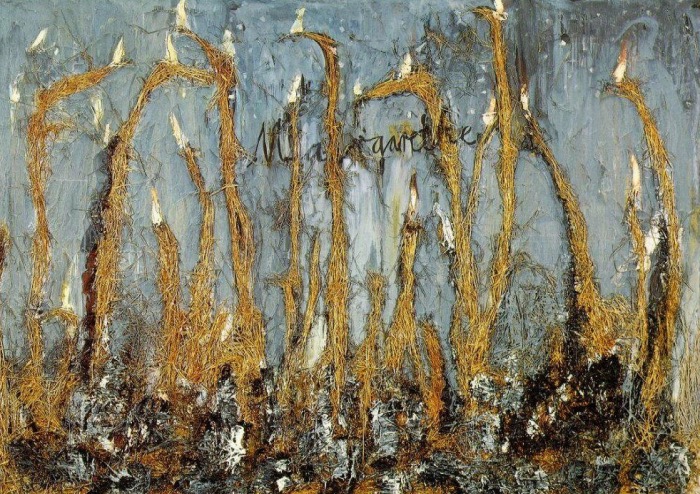
A. Kiefer, Margarethe (1981)
A passionate reader, Anselm Kiefer integrates literary and poetic references into his work.
Over time, his work becomes a broad and deep exploration of collective memory, history and myth, encompassing painting, engraving, photography, sculpture, artist’s books and works on paper.
After working in Buchen in the Odenwald between 1971 and 1992, Kiefer moved to France.
In 1993 he set up his own studio in a former silk factory in Barjac, in the south of the country, and since 2007 he has also worked in a studio in Croissy, near Paris.
The mid-1990s marked a change in the production of his works.
Long trips to Asia, America and Africa fostered an interest in the exchange of thought between the Eastern and Western worlds.
The discovery of Robert Fludd, the 17th-century English philosopher and cosmologist, led him to introduce themes concerning the relationship between the macrocosm and the microcosm into his work.
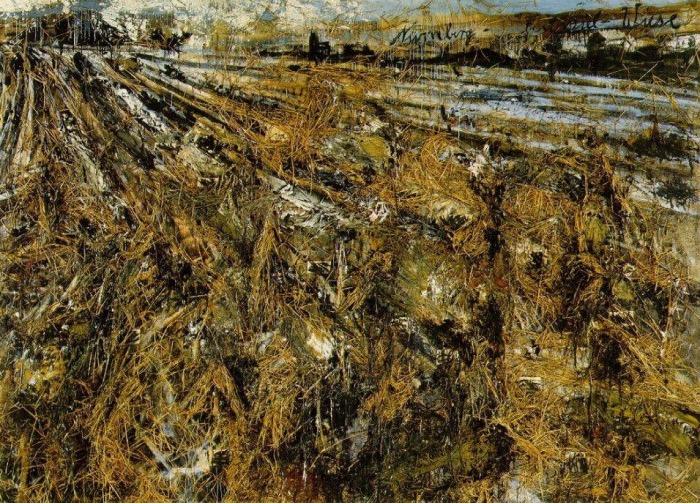
A. Kiefer, Norimberga (1982)
In 2011, Kiefer published the book L’arte sopravvivrà alle sue rovine, a valuable collection of lectures he gave at the College de France between 2010 and 2011, when he held the chair of Artistic Creation.
Kiefer draws on literature, poetry, philosophy and his personal memories in an attempt to unravel and reveal the process of sedimentation and reworking of the themes that circulate, intersect and come together to form the constellation of his art.
These lectures shed light on the universal dimension of an artist whose work is traversed by history, myth, religion, Jewish mysticism, women and poetry. A collection of writings that are important for understanding his work.
During his years of activity in Barjac, Kiefer dug a network of underground tunnels and crypts in the land surrounding the studio, connecting the numerous pavilions built outdoors, where his installations are located.
In 2021 this studio-property became part of the Eschaton-Anselm Kiefer Foundation, which will open to the public during 2022.
“Only in art do I have faith, and without it I am lost. I couldn’t live without poems and paintings, not only because I don’t know how to do anything else, because I haven’t learned anything else, but for almost ontological reasons. Because I distrust reality, even though I know that, in their own way, even works of art are an illusion.” – A. Kiefer
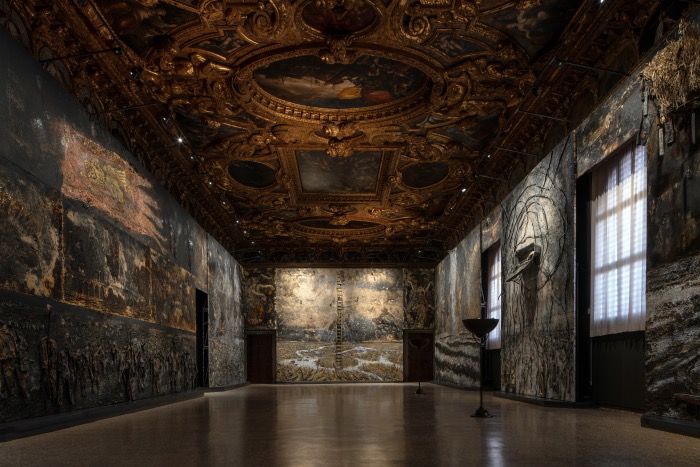
INSTALLATION VIEW
© Anselm Kiefer. Photo: Andrea Avezzù. Courtesy Gagosian and Fondazione Musei Civici Venezia.
ANSELM KIEFER’S EXHIBITION IN VENICE
Anselm Kiefer exhibits a series of new works in the Sala dello Scrutinio and the Sala della Quarantia Civil Nova at the Doge’s Palace in Venice on the occasion of the 59th Art Biennale.
ANSELM KIEFER
These writings, when burned, will finally shed some light
26 March – 29 October 2022
Palazzo Ducale, Sala dello Scrutinio, Venice
Tickets
Entrance to the exhibition is included in the Palazzo Ducale ticket.
Kiefer has been invited by the Fondazione Musei Civici di Venezia (MUVE) to present an installation of site-specific paintings that dialogue with one of the most important spaces of the Doge’s Palace and with the history of Venice.
In the installation at the Doge’s Palace, Anselm Kiefer reflects on Venice’s unique position between North and South and its interaction between East and West, finding significant connections between these different cultures, the history of the city and the text of Goethe’s tragic work, ‘Faust: Part Two’ (1832).

